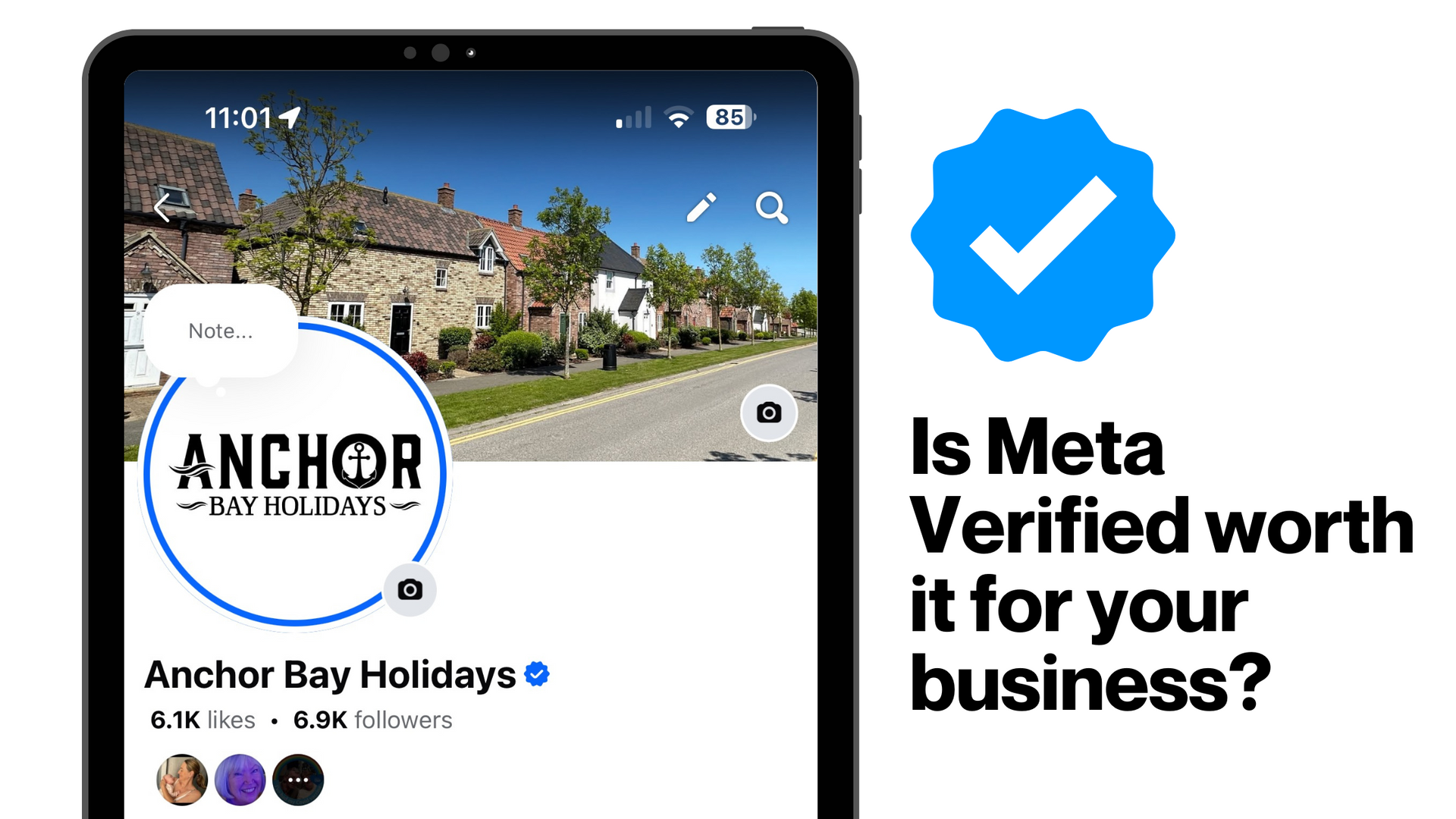Implementing a social media policy
In the first quarter of 2020, 420 billion people were active on social media*.
Now, how employees use their personal social media accounts is up to them, however, what staff post on social platforms can have serious consequences and can come back to haunt employers. Where would this leave a business, and how can it be managed?
Implementing a social media policy within a business is incredibly important in modern times, when a quick ‘Google’ of somebody can bring up their whole social media history. By creating a policy, you can clearly outline the dangers of posting on social media to your staff. But social media policies don’t have to be all doom and gloom – your social media policy can also empower staff, by giving them the chance to express their own views and opinions on social media platforms (although we would advise making sure they are clear that these views don’t reflect the business). A successful social media policy will also ultimately protect your brand, by making sure that anything published online adheres to your companies’ values, and potentially preventing any negative backlash.
So, what does ‘social media’ actually mean? Well, it can mean an array of things. From more personal and private platforms (such as Snapchat and Facebook) to Twitter and Instagram, where people tend to have larger followings. Then there’s the newer platforms such as TikTok, where people have more creative freedom over the content they post, and finally, LinkedIn, the business platform (that your staff may use as a digital CV, where they WILL be seen as a member of staff). This is the platform to keep an eye on. As a business, this is where your professional connections will spend most of their time.
Social media platforms are ever growing and changing, so it is imperative for a business to keep its social media policy updated. With business-based platforms (LinkedIn), a person’s posts directly reflect the company they work for, therefore this could be a platform worth included specific information about within your social media policy. Facebook, Twitter, Instagram, Snapchat, TikTok, etc., are all seen as being more for personal use, than business use. If your staff are client facing, it is worth asking them to add into their profile, or ‘bio’, that views are their own. This way if there is anything untoward, it doesn’t reflect badly on the company.
Now you know a bit more about social media and why a policy on it is a good idea, let’s talk about what you should include in a policy…
- Sharing proprietary or confidential company information
This is a big NO for most employees in a business anyway and is usually included in an employee’s contract, however sharing confidential information about the company via social media can end up causing all sorts of bother. It’s a good idea to include this to avoid company information being made public knowledge when this isn’t desired.
- Posting defamatory, derogatory or inflammatory content
This one seems like a no-brainer, however, 18% of employers in the US have dismissed employees as a result of something they have posted on social media. *(CareerBuilder) By not following this, employees can give the brand an image of employing undesirable, offensive and even aggressive staff. It would be a good idea to include a no-tolerance rule to this in your policy, to ensure no members of staff get caught up in a messy situation (or a lawsuit!)
- Posting information or pictures that imply illegal conduct
This one speaks for itself. Whilst what your employees do in their own time is their choice, you don’t want your company to become caught up in a scandal regarding the illegal activity of staff members. Not only would we suggest putting this in your policy but also remind all employees frequently that they are representatives for the business, and illegal conduct (explicit or implied) being posted on social media will not be accepted.
- Set of guidelines per platform with examples
This leads on from the previous point in a way. Your social media policy should include a non-exhaustive list of social media platforms with a set of guidelines for each. An example may be:
‘Snapchat – Do not post images where your company logo is visible, if the image could cause harm or negative impacts to the business. I.e., acting irresponsibly whilst wearing a work uniform.’
- Brand guidelines: How to talk about your products, services and company
Remind your employees that they are ambassadors for your brand, especially if they do choose to include the company name anywhere on their socials. By including an online brand guideline (slightly different to the general brand guideline) in your policy, you are reminding staff to use positive language and speak in a positive way when it comes to all things work related.
- Etiquette: How to respond to comments from customers
This one is incredibly important for your staff in client-facing roles. One thing I always say, is treat customers how you would want to be treated as a customer. I’m sure most people would agree that this would be with respect, with dignity and with compassion. Nobody wants to be spoken down to or belittled by somebody, so be helpful, provide exceptional customer service, and treat customers with kindness – this will always reflect the business positively.
- Confidentiality: Which details should absolutely not be shared on social media
Staff who are aware of sensitive information are normally told not to share this anyway, however, by including it in your social media policy you can make sure that staff know not to share confidential details online. A list of all the confidential information within a business is probably going to be quite long, so we’d suggest letting staff know the main ones relating to your business.
- Consequences: What will happen if they fail to use social media correctly
When creating a social media policy, you need to set clear consequences as to what will happen if social media isn’t used correctly. This could be a in line with your current disciplinary procedure, or a process of verbal and written warnings leading to eventual dismissal.
- Procedure for if staff leave
If a staff member leaves, there’s several things that need to happen. They should alter any social media that says they work for the business, as this would no longer be accurate. They would also need to have any access to admin rights, business log ins and passwords, and any other access to sensitive data revoked. This is to prevent the staff member from gaining access to private company accounts, especially if this would be done maliciously and could affect the business.
- Anything else you see fit
These are just a few examples of what you should include in a social media policy, however the list of what could be included is endless and can alter from business to business.
To get the policy created, you have a number of options:
1. Decide the points you’d like to be covered and contact a solicitor to draft this for you.
2. Contact the HR colleague within your organisation. This person will be a member of the CIPD. The CIPD might have a free template available to members, you can amend and use.
3. Download and amend a free template from the internet.
So, it’s all in place, sit back and relax, right?
To a certain extent. I would, on an ongoing basis randomly check your staff's social media.
Pop onto LinkedIn and view their profile (anonymously if you prefer) and check out their activity and do the same on the larger more popular profiles.
But what do you do if this policy is violated by a member of staff?
Your policy should be clear and precise, which means you can act quickly if a violation occurs and easily find which part of the policy has been broken. This would also be a time where more than one policy interlinks, and you may bring in your disciplinary procedure. For violations that aren’t of the most serious nature, or are one-off offences, it may be worth discussing the issue and root cause with the employee, rather than entering formal procedures. If you do have to follow a formal procedure as a result of a policy violation, it would be necessary to make sure you have all the correct documentation and proof – a copy of the violation, a copy of the policy, and any signed documentation from the employee with regards to the policy (e.g., a contract).
As mentioned earlier, social media is constantly changing and evolving, so keeping on top of your policy is key. Reviewing and tweaking your policy every so often means you’re able to keep up to date with new platforms that arise, as well as making any changes if a staff member is promoted to a client-facing role and updating the policy to match any changes in the company landscape, services and product changes.
I hope this blog has helped you tighten up your social media policy in-house, feel free to share to other business owners who might benefit from it too.
* Source: STATISTA




How you can effectively use LinkedIn for free to boost your marketing and grow your podcast audience




I hope you enjoyed reading this blog post.
If you’d like further help, let’s jump on a call and have a chat.






